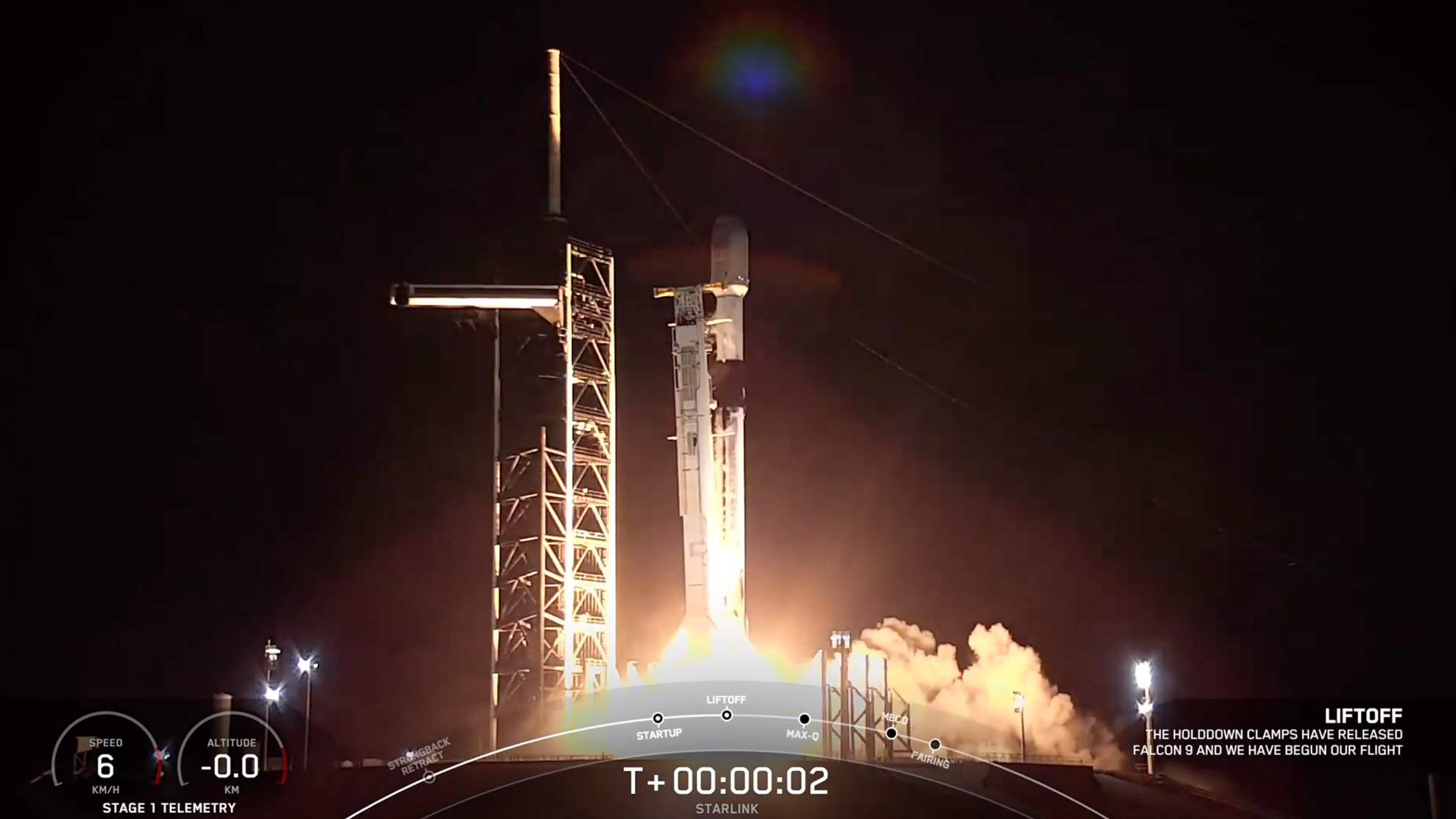Spotting Stars, Planets and More during Eclipse Totality Using Mobile Apps

During the total solar eclipse on Aug. 21, the sky will darken considerably, revealing bright stars and planets that are normally hidden by daylight. It's been said that seeing the planets arrayed around the sun during a total solar eclipse truly conveys a sense of one's place in the solar system and the universe beyond.
In the past, astronomers have used solar eclipses to test Albert Einstein's theory of relativity, look for comets near perihelion (the points in their orbits where they're closest to the sun) and search for theorized inner planets. For skywatchers who'd like to look for some "bonus objects" during the brief two and a half minutes of totality, when the sun is completely covered by the moon, mobile astronomy apps can offer a guide for where to look. And by previewing where to find them, you'll still have plenty of time to enjoy the spectacle of the sun's outer atmosphere, called the corona, and orange-pink solar prominences visible around the moon's disk.
Looking at anything other than the eclipsed sun during totality on Aug. 21 is a personal choice. This total solar eclipse has a relatively short period of totality, so first-timers should really soak in the spectacle of the eclipsed sun. Seasoned eclipse chasers might enjoy looking for other eclipse-related phenomena. [7 of the Best Total Solar Eclipse Apps for Aug. 21]
In this edition of Mobile Astronomy, we'll explain how to use sky-charting apps to find out which stars and planets you can see, and where in the sky to look for them. Binoculars will be a terrific aid for seeing the details of the corona during totality, so why not scan around a little and see what else you can spot? Just remember to put them away before the moon moves off the sun.
REMEMBER: Looking directly at the sun, even when it is partially covered by the moon, can cause serious eye damage or blindness. NEVER look at a partial solar eclipse without proper eye protection. See our complete guide to find out how to view the eclipse safely.
Hidden planets revealed
The sun and the planets that are visible to the naked eye always appear on or near the ecliptic, the imaginary line that traces the plane of the solar system around the sky. The planets with orbits larger than Earth's can appear in a fully dark sky (when opposite the sun) or shine in the predawn eastern sky or the evening western sky. They disappear into the sun's glare when they are near solar conjunction. The inner planets Mercury and Venus never venture more than about 25 degrees and 50 degrees away from the sun, respectively, so they spend a lot of time hidden in the daylight sky.
The brightest planets, Venus and Jupiter, can be seen in broad daylight with binoculars or unaided eyes — if you know where to look. But it can be a challenge to find them unless the moon happens to be nearby, offering a starting position for a binocular search. (See "How to See Jupiter by Day and Its Moons by Night Using Mobile Astronomy Apps.") During a total solar eclipse, the sky dims to the equivalent of dark twilight, so it's no surprise that those two planets can pop into view in a sky darkened by the eclipsed sun.
Get the Space.com Newsletter
Breaking space news, the latest updates on rocket launches, skywatching events and more!
Mercury and Mars vary in brightness depending on their distance from Earth. Although normally dimmer than Venus and Jupiter, they can also sometimes be seen with the naked eye during a total solar eclipse — and so can the brightest stars. The arrangement of the stars and planets is different for every eclipse, and sky-charting apps offer a perfect tool for previewing it. Let's go over what to expect for this eclipse.
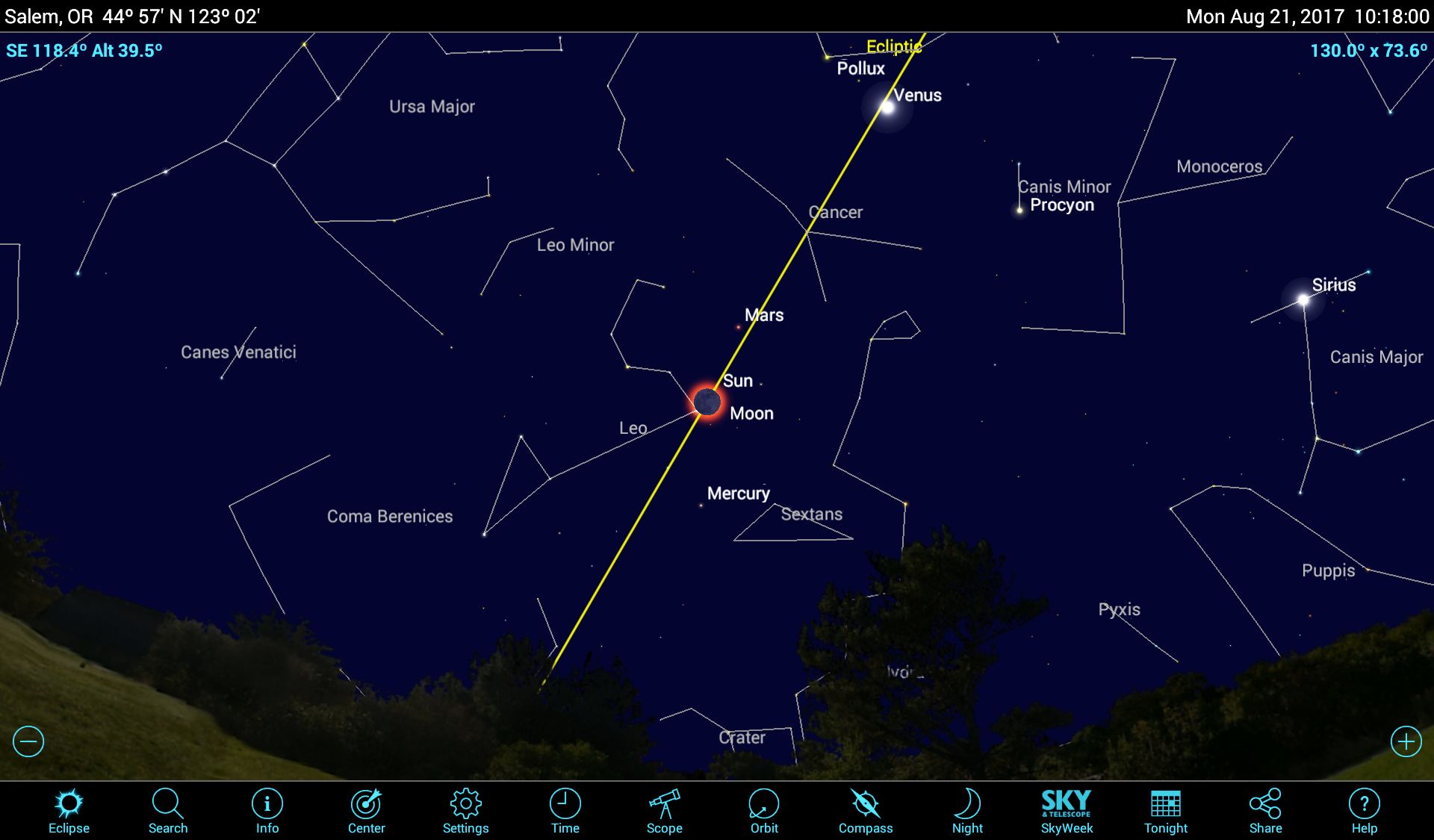
For the Aug. 21 eclipse, Venus will be positioned 34 degrees to the west (in celestial coordinates) of the eclipsed sun. (An adult's fist held at arm's length spans about 10 degrees of the sky.) In the Western states, totality will occur in midmorning, so the steep tilt of the morning ecliptic will put the planet high to the upper right of the eclipse. Farther east, the total eclipse will occur hours later, flattening the ecliptic and bringing Venus lower. In Lincoln, Nebraska, for example, look for Venus 34 degrees to the right of the eclipsed sun. From the Eastern Seaboard in Charleston, South Carolina, Venus will appear a bit lower than the sun. At a visual magnitude of minus 3.9, Venus should be easy to spot with unaided eyes even in places where only a partial eclipse occurs. Remember to exercise extreme caution if looking around the sky with unfiltered binoculars anytime the sun is not completely covered, and avoid looking right at the sun!
For this eclipse, Jupiter will sit 51 degrees east of the sun as viewed from Earth. Unfortunately, at totality, Jupiter will not be above the eastern horizon for observers west of Wyoming. When viewed from the middle of the continent, Jupiter will appear to sit well below, and to the lower left of, the sun, above the southeastern horizon. By the time observers in Charleston see totality, Jupiter will be off to the left of the eclipsed sun. At a visual magnitude of minus 1.8 — lower magnitudes are brighter — Jupiter will be dimmer than Venus but still within naked-eye visibility during totality (and, in some locations, during the partial eclipse).
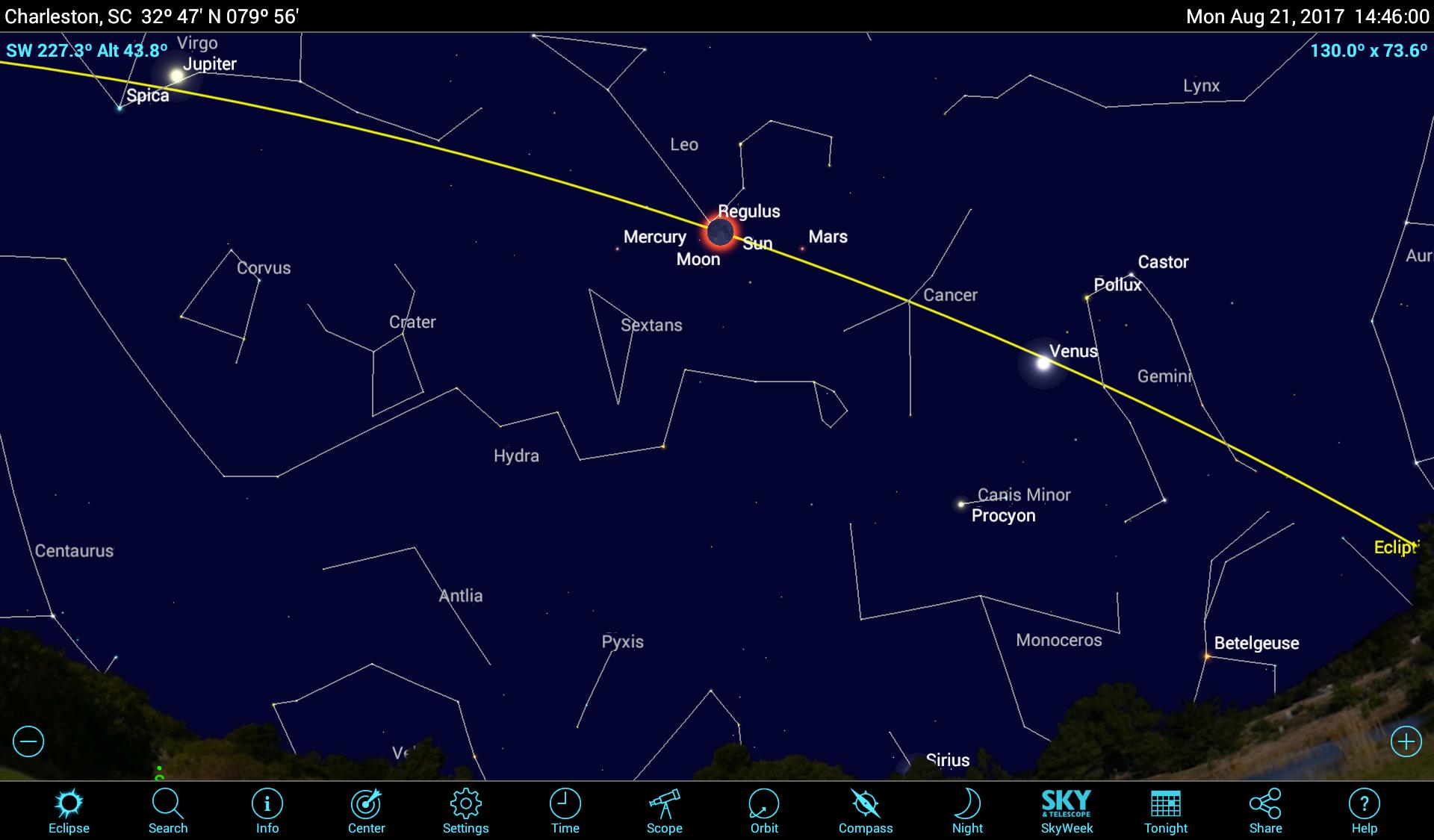
Two other planets will appear much closer to the sun. Reddish Mars will have a visual magnitude of 1.8, in range of sharp eyes and binoculars. Look for it sitting about 8 degrees to the right of the eclipsed sun — higher for the Western states and at about the same elevation as the sun on the East Coast. At a visual magnitude of 3.6, much dimmer Mercury will be situated 10 degrees to the lower left of the sun. Once totality has begun, you may search for it with unfiltered binoculars, but you must stop your search before totality is over, or you could risk permanently damaging your eyes! Expect to see Mercury and Mars in wide-field photographs that capture the sun's corona.
The bright stars come out
The stars and constellations around the eclipsed sun are arranged the same way you would see them in your evening sky in springtime. This eclipse occurs when the sun is within the constellation of Leo. During totality, Leo's brightest star, Regulus, will sit only 1 degree (a finger's width, or two moon diameters) from the eastern (left-hand) edge of the eclipsed sun. Bright enough to be seen with the naked eye (magnitude 1.35), the star also will be visible in binoculars and photographs, and may even be overlain by the sun's corona. Eclipse watchers in the Western states should look for the star to the lower left of the sun, and to the upper left when viewed from the Eastern states.
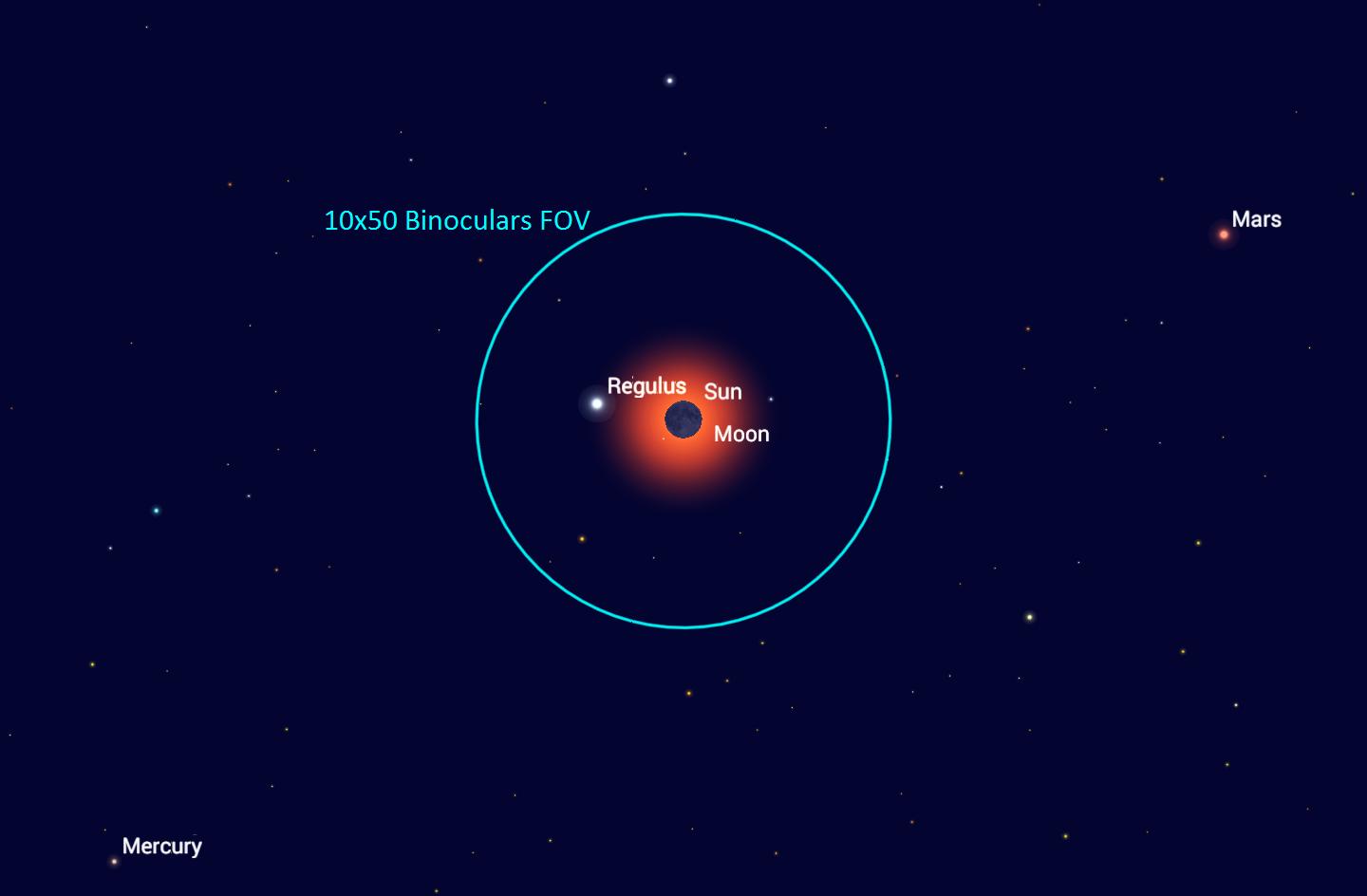
A few other bright stars may be visible during totality. Sirius — the brightest star in the entire night sky, at magnitude minus 1.45 — will be above the southwestern horizon. It will be close to setting for observers in the Eastern states. Procyon will be higher, sitting 15 degrees below Venus. And you might pick out Betelgeuse and Orion's Belt to its lower right, Capella off to the right of Venus, the twin stars Castor and Pollux a palm's width above Venus, and Arcturus about 30 degrees above Jupiter. Photographers might try to capture the Beehive Cluster, also known as Messier 44. This bright star cluster will be positioned 21 degrees from the sun — a bit more than halfway to Venus.
How to preview the eclipsed sky
You can use the free Eclipse Safari app to show you a simulation of your sky during the eclipse, complete with the bright stars and planets you can see with the naked eye. For even more precision, you can use sky-charting apps such as SkySafari 5, Star Walk 2 and Stellarium Mobile to preview exactly where the bright stars and planets will appear during totality, allowing you to note which landmarks these objects appear over. This is important because, with totality so brief, you'll want to be able to find them quickly while enjoying the eclipse.
If you hope to spot the surrounding objects during the eclipse, you'll need an observing site where both the objects and the eclipse are in view all at once. Step one is to determine where in your sky the total eclipse will happen. Using the Eclipse Safari app, you can determine precisely when the eclipse will be visible from your location. By visiting your viewing site on a sunny day a few days before the eclipse, you can make note of the sun's location at the time indicated. It will differ only slightly on Aug. 21.
To ensure the bright planets won't be obscured by a hill, tree or building, use your outstretched fist to measure the angles between the sun and Jupiter, as well as the sun and Venus. Remember to account for the tilt of the ecliptic. Enabling Sky Simulation in Eclipse Safari will help you measure along the correct slope. Note the directions along the horizon where the eclipse and the planets will be. You can even put stakes in the ground. During totality, simply find the stakes, and pan upward. You can also do this for the other bright stars listed above. [How to Prep for Totality with New Eclipse Safari Mobile App]
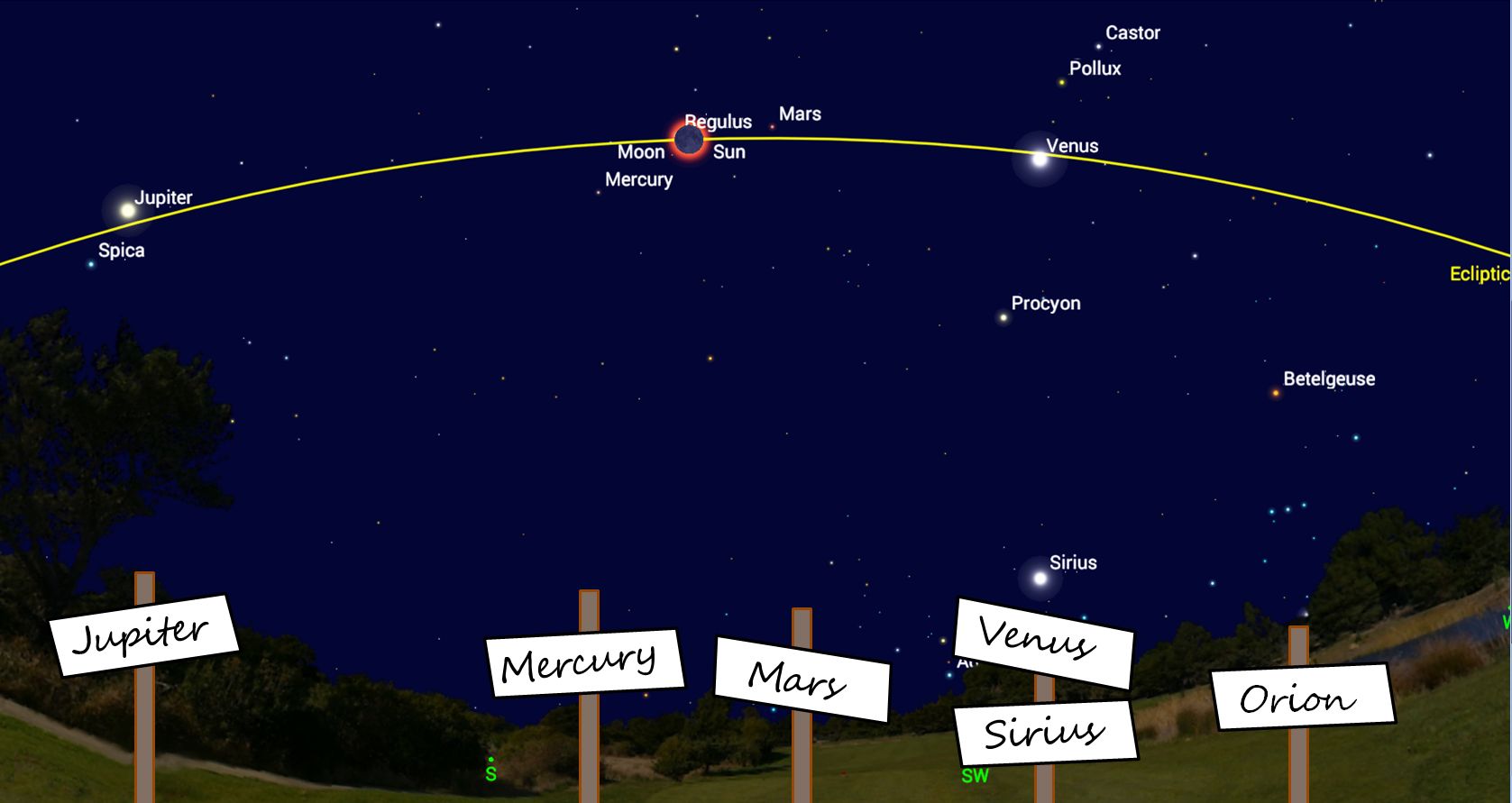
Another option is to use SkySafari 5 or another sky-charting app and your device's internal compass and gyroscope to preview the positions. Once it's dark enough to see the bright stars and planets, head outside with your mobile device. In SkySafari 5, set the time to "Now," and enable the compass mode. When you hold your device up to the sky, the display should match the stars and constellations. It's important for your device's compass to be calibrated. You can do this by following your device manufacturer's instructions — usually by swooping the device in circles.
Once you are confident in the directions of real objects indicated by the app, set the time to totality on Aug. 21. The app will show the eclipsed sun in the sky at the correct azimuth and elevation. Simply note where to look for the bright stars and planets during the eclipse. For this technique to work, you have to view the eclipse from the same spot.
Going beyond
Astronomers have used total solar eclipses to test Einstein's theory of general relativity. Einstein postulated that the mass of our sun would locally warp the space-time around it, slightly deflecting the light rays from distant stars. As a result, they appear to change location, moving farther from the sun by a predictable amount. Astronomer Arthur Eddington photographed the stars around the sun during the total eclipse of May 29, 1919. By measuring the difference between the distorted star positions and the positions on photographs taken when those stars appeared in the night sky, he confirmed the theory.
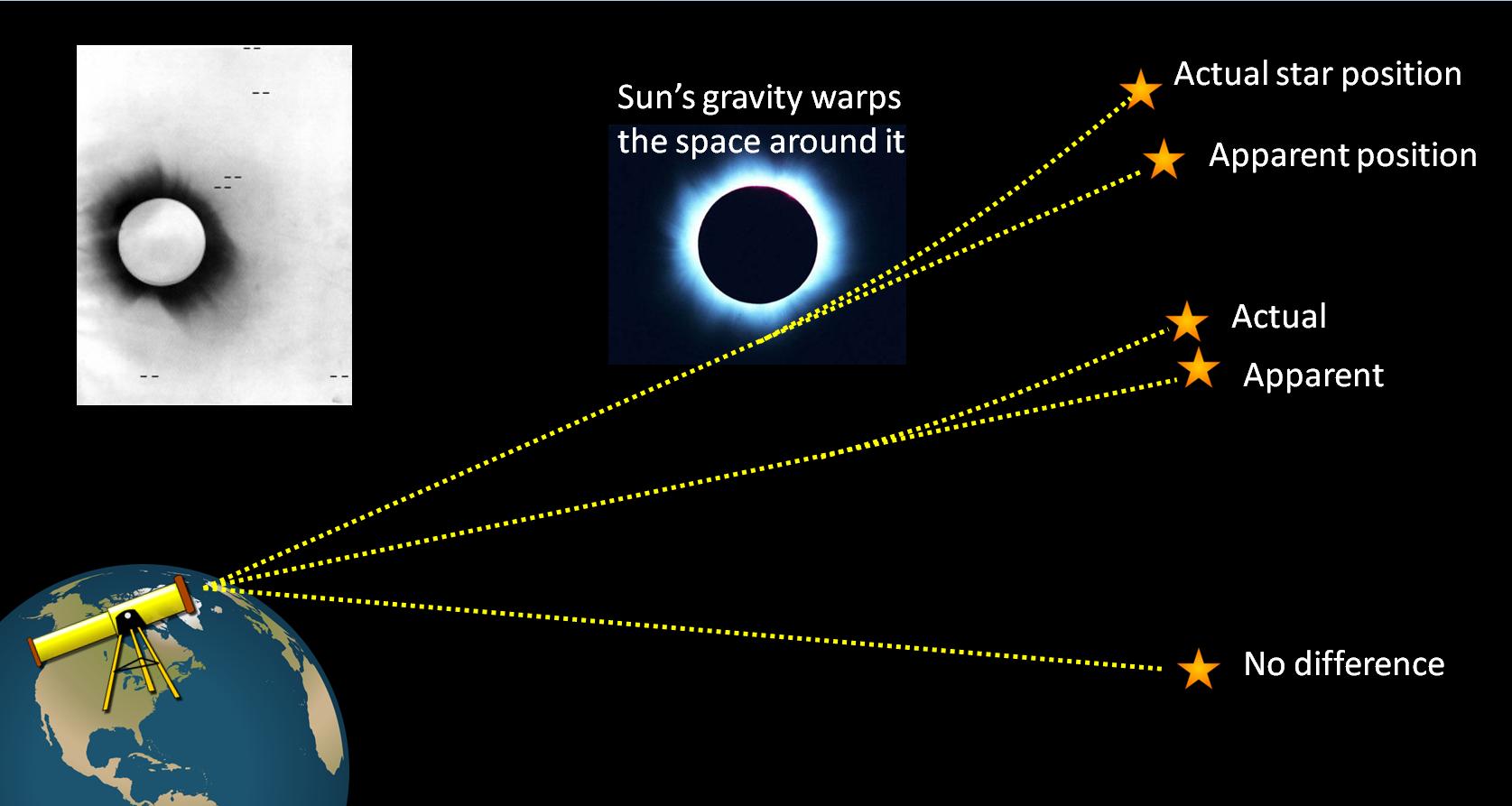
Another science application for eclipses would be to find comets; theoretically, if a bright comet happened to reach perihelion (its closest approach to the sun) within a day or two of a total solar eclipse, it would be possible for the darkened sky to reveal it briefly. Unfortunately, no bright comets are around for this eclipse.
Here's one more eclipse-related science story. In the late 19th century, astronomers were struggling to explain a wobble observed in Mercury's orbit. Many speculated that a planet orbiting closer to the sun than Mercury was perturbing its orbit. The path of totality for the solar eclipse of July 29, 1878, crossed the United States from Montana to Louisiana. Several noted astronomers set out to spot the elusive planet, dubbed Vulcan, during totality. Nothing was found, and the wobble effect was explained by Einstein's theory in 1915.
If you see any stars and planets during the eclipse on Aug. 21, feel free to share the news with Space.com on social media. The techniques I've outlined can be used for any upcoming total solar eclipse, anywhere on Earth — such as the one that will cross the eastern United States on April 8, 2024. In upcoming Mobile Astronomy columns, we'll cover in depth how to plan your eclipse trip. In the meantime, keep looking up!
Editor's note: If you capture an amazing photo of the stars and planets revealed by the total solar eclipse and you want to share it with Space.com for a story or gallery, send images and comments to managing editor Tariq Malik at spacephotos@space.com.
Chris Vaughan is an astronomy public outreach and education specialist at AstroGeo, a member of the Royal Astronomical Society of Canada, and an operator of the historic 74-inch (1.88-meter) David Dunlap Observatory. You can reach him via email, and follow him on Twitter @astrogeoguy, Facebook and Tumblr.
This article was provided by Simulation Curriculum, the leader in space science curriculum solutions and the makers of the SkySafari app for Android and iOS. Follow SkySafari on Twitter @SkySafariAstro. Follow us @Spacedotcom, Facebook and Google+. Original article on Space.com.
Join our Space Forums to keep talking space on the latest missions, night sky and more! And if you have a news tip, correction or comment, let us know at: community@space.com.
Chris Vaughan, aka @astrogeoguy, is an award-winning astronomer and Earth scientist with Astrogeo.ca, based near Toronto, Canada. He is a member of the Royal Astronomical Society of Canada and hosts their Insider's Guide to the Galaxy webcasts on YouTube. An avid visual astronomer, Chris operates the historic 74˝ telescope at the David Dunlap Observatory. He frequently organizes local star parties and solar astronomy sessions, and regularly delivers presentations about astronomy and Earth and planetary science, to students and the public in his Digital Starlab portable planetarium. His weekly Astronomy Skylights blog at www.AstroGeo.ca is enjoyed by readers worldwide. He is a regular contributor to SkyNews magazine, writes the monthly Night Sky Calendar for Space.com in cooperation with Simulation Curriculum, the creators of Starry Night and SkySafari, and content for several popular astronomy apps. His book "110 Things to See with a Telescope", was released in 2021.

